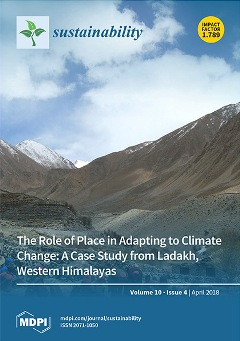Open AccessArticle
Results from On-The-Ground Efforts to Promote Sustainable Cattle Ranching in the Brazilian Amazon
by
Erasmus K.H.J. Zu Ermgassen, Melquesedek Pereira de Alcântara, Andrew Balmford, Luis Barioni, Francisco Beduschi Neto, Murilo M. F. Bettarello, Genivaldo De Brito, Gabriel C. Carrero, Eduardo De A.S. Florence, Edenise Garcia, Eduardo Trevisan Gonçalves, Casio Trajano Da Luz, Giovanni M. Mallman, Bernardo B.N. Strassburg, Judson F. Valentim and Agnieszka Latawiec
Cited by 58 | Viewed by 13920
Abstract
Agriculture in Brazil is booming. Brazil has the world’s second largest cattle herd and is the second largest producer of soybeans, with the production of beef, soybeans, and bioethanol forecast to increase further. Questions remain, however, about how Brazil can reconcile increases in
[...] Read more.
Agriculture in Brazil is booming. Brazil has the world’s second largest cattle herd and is the second largest producer of soybeans, with the production of beef, soybeans, and bioethanol forecast to increase further. Questions remain, however, about how Brazil can reconcile increases in agricultural production with protection of its remaining natural vegetation. While high hopes have been placed on the potential for intensification of low-productivity cattle ranching to spare land for other agricultural uses, cattle productivity in the Amazon biome (29% of the Brazilian cattle herd) remains stubbornly low, and it is not clear how to realize theoretical productivity gains in practice. We provide results from six initiatives in the Brazilian Amazon, which are successfully improving cattle productivity in beef and dairy production on more than 500,000 hectares of pastureland, while supporting compliance with the Brazilian Forest Code. Spread across diverse geographies, and using a wide range of technologies, participating farms have improved productivity by 30–490%. High-productivity cattle ranching requires some initial investment (R$1300–6900/ha or US$410–2180/ha), with average pay-back times of 2.5–8.5 years. We conclude by reflecting on the challenges that must be overcome to scale up these young initiatives, avoid rebound increases in deforestation, and mainstream sustainable cattle ranching in the Amazon.
Full article
►▼
Show Figures





